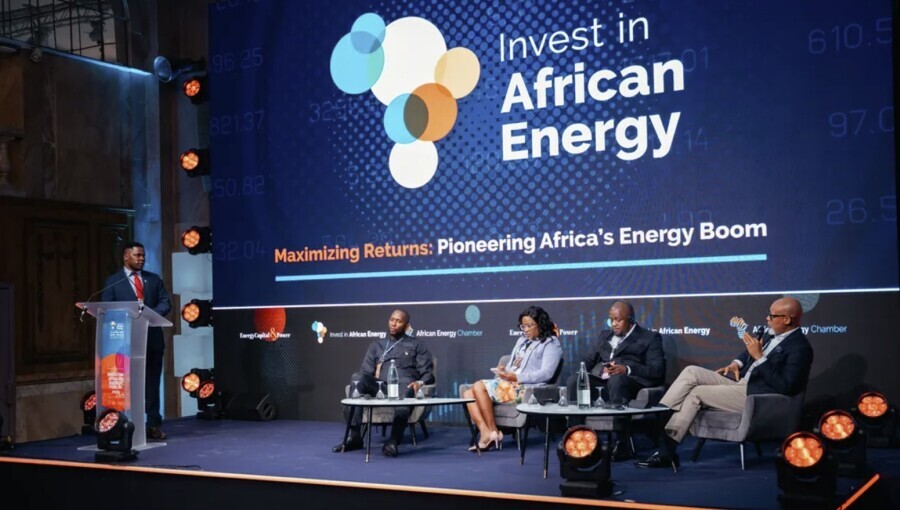African Energy Chamber to release State of African Energy 2026 Outlook at AEW 2025 in Cape Town

The African Energy Chamber (AEC) has announced the launch of its latest report, written in collaboration with data and analytics company S&P Global Commodity Insights, at the African Energy Week: Invest in African Energies conference, taking place from September 29 to October 3 in Cape Town, South Africa.
The report, titled The State of African Energy 2026 Outlook, will offer a comprehensive overview of trends, challenges and opportunities in the African energy sector. According to the Chamber, it will cover all segments of the African energy value chain, from downstream to midstream and upstream market trends, gas and liquefied natural gas (LNG) sector development, power generation, renewables and energy transition.
“At a time when African energy demand is expected to rise fourfold and energy investments will reach $54 billion by 2030, the outlook serves as a guide for financiers and project developers,” the AEC said in a press statement on September 23.
Upstream outlook
One of the main features of the State of African Energy 2026 Outlook is its emphasis on Africa’s upstream sector. It provides insights into exploration and production (E&P) trends, planned drilling campaigns, and the emergence of new petroleum frontiers across the continent. The report estimates Africa’s oil and gas output to climb to 11.4 million barrels per day (bpd) by 2026, with Nigeria being the top producer owing to its substantial remaining recoverable reserves.
On a global scale, E&P capital expenditure is forecast to reach $504bn by 2026, of which Africa will account for about $41bn. According to the report, much of this regional investment will be directed towards offshore opportunities in Mozambique, Angola, and Nigeria. As companies seek new oil and gas discoveries, Africa’s largely unexplored and frontier basins are drawing growing interest. High-impact wells with the potential to transform national energy sectors are planned in South Africa, Namibia, and Côte d’Ivoire, says the AEC.
Midstream and downstream
Africa’s growing population and expanding economy are set to drive rapid increases in demand for refined oil products. Consumption is expected to rise 50%, from around 4mn bpd in 2024 to more than 6mn bpd by 2050. At present, much of the oil trade linked to Africa involves exporting crude and importing refined products. According to the report, there is scope to make this process more efficient and deliver greater value to the continent. To meet rising demand and strengthen supply and distribution chains, over $20bn will need to be invested in downstream infrastructure by 2050.
Natural gas and LNG
The report includes a detailed assessment of Africa’s natural gas and LNG market, noting that the continent holds substantial potential, supported by a series of exploration successes across both established and emerging basins. In 2024, Africa produced over 300bn cubic metres of natural gas and supplied 8.5% of global LNG, equal to 34.7mn tonnes.
The analysis points to new LNG developments in Angola, Senegal and Mauritania, while also highlighting structural and financial challenges that could slow down gas monetisation and wider industrial use. Additionally, it reviews rising domestic consumption trends, the growing use of floating LNG (FLNG) facilities and efforts to curb gas flaring, providing practical insights for prospective investors.
Power and renewables
Beyond oil and gas, the report examines Africa’s power and renewable energy sectors. It projects that electricity demand will grow from about 1,028 TWh in 2025 to 2,291 TWh by 2050. The findings highlight a strong move towards renewable energy, with governments procuring roughly 25 GW of capacity by 2024 and a further 11 GW secured through private offtake deals. According to the AEC, Africa’s increasing focus on renewables is opening up major opportunities for both investment and innovation. Between 2020 and 2025, the continent channelled $34bn into clean energy technologies, with solar attracting 52% of this total and onshore wind 25%, says the report. By 2050, natural gas, which is seen as a transitional fuel, is expected to contribute 45% of overall power generation.
Energy transition
The report also provides an overview of Africa’s energy transition and what it means for the continent. By 2060, Africa is estimated to account for 28% of the world’s population, however, its share of global energy-related emissions will account for only 9%. According to the AEC, this represents both the region’s relatively low per capita energy use and the chance to follow a low-carbon growth path. The analysis shows the potential impact of emissions regulations and the opportunities linked to carbon trading in Africa, highlighting the benefits of a more integrated approach to energy development. Taken together, these insights make the AEC’s State of African Energy 2026 Outlook an important reference point for investors.
“2025 has been a year of unprecedented challenges, and the trials and tribulations have made the AEC’s work more important now than ever,” AEC’s Executive Chairman NJ Ayuk said in the statement. “We are committed to helping Africa’s energy stakeholders navigate a complex and ever-changing global energy landscape. We will continue our mission to support the dynamic private sector and unlock the continent’s remarkable energy potential.”






Follow us online